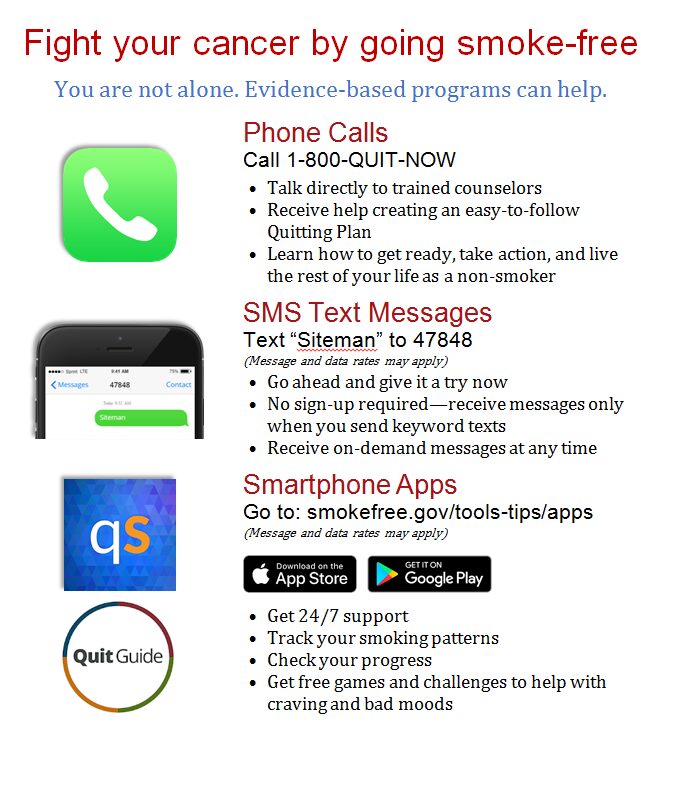
Texts were customized based on baseline assessments. Three months of fully-automated texts tailored to stage of change as per the TTM. Participants were recruited at a university. The proportions of primary and secondary outcomes meeting statistical significance for studies whose primary outcome measures were adequately or nearly adequately powered were calculated. We excluded case reports and medication adherence studies. Earlier stage studies are described first, regardless of publication date. Studies were organized in the results section by type of drug of abuse and whether text messaging was a standalone intervention or one component of a multimodal intervention. We included only randomized controlled trials (RCTs) for tobacco cessation and all studies for other substance use problems. We also checked the reference lists of included publications. We searched on the following combinations of terms in PubMed to identify studies that included phone-based text messaging as a component of interventions for substance use problems. 2009) this paper includes only interventions that include a text messaging-based component and summarizes important addiction-related studies using different populations. Other reviews have been performed to summarize available data on mobile health interventions for tobacco smoking cessation and/or alcohol use reduction ( Chen et al. In addition, tailoring messages to individual users through a screening interview or computerized algorithm may enhance the efficacy of these interventions.

Automated text messaging has been shown to be inexpensive and efficacious, and hence cost effective ( Guerriero et al. Furthermore, studies of cannabis and opioid dependent participants indicate that computer-delivered therapy may have equivalent efficacy to the same therapist-delivered treatment ( Budney et al. Thus, text messaging-based interventions show potential in that they are readily-available, simple to use, and, if automated rather than sent by clinicians, can reach a wide audience. However, while smart phone saturation is incomplete, a 2011 21-country survey by the Pew Research Center (2012) found that 75% of cell phone users send and receive short message service (SMS) text messages. Interventions using sophisticated technologies such as smart phones have been made feasible in recent years. Messages sent in real-time could help to compensate for these deficits by, for instance, reinforcing negative consequences of using or reminding participants of what they have learned in therapy sessions. Use of some drugs is also associated with amplified delay discounting, in which users prefer immediate, smaller rewards to delayed larger rewards ( Fernandez-Serrano, Perez-Garcia & Verdejo-Garcia 2011). 2011) and decision making ( Fernandez-Serrano, Perez-Garcia & Verdejo-Garcia 2011). In addition, individuals with substance use disorders may have significant impairment in a number of neuropsychological domains, notably prospective memory ( Weinborn et al. Even for healthy individuals, repetition can improve retention of new information. Furthermore, cognitive behavioral therapy (CBT) interventions rely on a learning component.
#SMOKE FREE TEXT MESSAGING PROGRAM HOW TO#
For example, these interventions could be used to reinforce skills learned during treatment as well as to present reminders about how to handle relapse.ĭuring treatment, these technologies have the potential to serve as real-time interventions when patients are not in the clinic and craving and risk of use are high (although outpatient therapies are a more affordable approach than inpatient or residential treatment, support is generally only available for a limited number of hours each day). Mobile health technologies could also be used to enhance existing interventions, and may be useful in maintaining improvement after completion of treatment. Mobile health technologies have potential to assist individuals suffering from addictive disorders who would not otherwise have access to treatment due to cost, geographic availability, or school or work schedule conflicts. 2007), limiting the ability to self-pay for treatment. Moreover, prevalence of drug abuse and dependence are generally greater among those with lower socioeconomic status ( Compton et al. 2000), but reimbursement mechanisms for prolonged, expensive interventions are lacking ( Kelly & White 2011).


Addiction is often a chronic, relapsing condition ( Compton et al.

2007 Office of National Drug Control Policy 2004), only a minority 8.1% of persons who abuse drugs in the United States receive treatment ( Compton et al. Despite the high prevalence of substance use disorders and their individual, societal, and economic costs ( Bouchery et al.


 0 kommentar(er)
0 kommentar(er)
